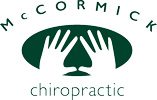ARE YOU A CANDIDATE?
 Fractures typically occur after a fall or accident but sometimes there does not need to be an injury to cause a fracture if the bones are brittle as with osteoporosis or with a tumor in the spine. You may be at risk for osteoporosis (brittle bones) if you are – age over 50, female, thin body habitus, smoker or have used oral steroids for a long time.
Fractures typically occur after a fall or accident but sometimes there does not need to be an injury to cause a fracture if the bones are brittle as with osteoporosis or with a tumor in the spine. You may be at risk for osteoporosis (brittle bones) if you are – age over 50, female, thin body habitus, smoker or have used oral steroids for a long time.
A fracture can present if you suddenly start to feel pain in the low or mid back which worsens when you move or breath. A simple x-ray can help identify the fracture so that you can treat it effectively. Conservative treatments include pain medications and back bracing, allowing the fracture time to heal. Most fractures heal over the course of several months with some taking up to a year.
ADVANCED TREATMENTS:
Vertebroplasty and Kyphoplasty are two similar nonsurgical procedures that are typically performed for acute painful spine fractures related to osteoporosis or more rarely, cancer of the spine. They may be indicated immediately if the pain is severe or if a patient is not getting the needed relief with conservative treatments.
We perform these procedures in the office procedure suite under local anesthesia/light sedation and usually no general anesthesia is needed. The typical procedure lasts 45 minutes but can be up to 90 minutes if there are several fractures. Patients usually feel immediate relief right after the procedure and are able to go home within several hours.
Needles and live X-ray guidance are used to enter the fracture so that an incision is not needed. This allows for quicker recovery and less complications than a traditional open surgery. Bone cement is delivered through the needles into the fracture so that it is stabilized thus reducing or stopping the pain.
In Kyphoplasty, balloons can be inflated to create a cavity in the treated vertebral body and hopefully restore some of the height lost from that vertebral body by the fracture. If height is improved, the alignment of the spine may also be improved.
In Vertebroplasty, the cement is injected directly into the vertebral body without any balloon inflation.
RESULTS:
Both procedures work very well for painful fractures. About 90% of the patients have improvement in their pain with most being cured of pain completely.
For the highest probability of restoring vertebral height, the kyphoplasty procedure should be done as early as possible after fracture occurrence; however it may still be a treatment option for older fractures that have not healed properly and continue to cause pain many months after the injury.
RISKS:
There are much fewer risks than with a traditional open surgical procedure, however whenever a needle is inserted into the body there is a risk of bleeding, infection, or nerve injury.
Overall, these procedures have well-established safety records and are 100% covered by Medicare and most private insurers. Dr. Canty can review your complete medical history and help you decide whether the procedure is a good option for you.
For Your Health,
Dr. Skyler McCormick
